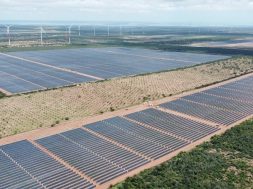
Surprisingly, despite the many rural electrification schemes that India has launched since 2005, there are about 3.21 crore households in India still without electricity. The NDA government plans to fix this with the auspiciously named Pradhan Mantri Saubhagya scheme.
What is it?
The Pradhan Mantri Sahaj Bijli Har Ghar Yojana, shortened into Saubhagya, was flagged off in September 2017, with the objective of electrifying all left-out Indian households. The original completion date of March 2019 has been advanced to December 2018. The scheme covers both urban and rural households. Under it, free electricity connections are provided to below poverty line (BPL) households, while other households have to pay ₹500 for the connection.
This is recoverable by the power distribution company in 10 instalments along with the electricity bills.
The total cost of the Saubhagya project is pegged at ₹16,320 crore, of which, 60 per cent is funded by the Centre, 30 per cent by bank loans and the remaining 10 per cent by State governments. Of the total outlay, a chunk — ₹14,025 crore — is proposed for rural areas.
The scheme envisages electricity connection for each household by drawing a service cable from the nearest electricity pole to the home, installing an energy meter, and wiring for a single light point with an LED bulb and a mobile charging point.
In case a pole is not available, a new one is erected with a conductor and associated accessories. For remote and inaccessible areas, electricity is provided through solar panels and five LED lights, one DC fan and one DC power plug can be used. Repair and maintenance for five years is also part of the scheme.
Why is it important?
A government announcement last month that the last unconnected Indian village of Leisang in Manipur had been connected to the grid, drew a lot of social media debate on the official definition of rural electrification in India.
Sceptics pointed out that quite a large number of Indian households are still without electricity, despite the 100 per cent rural electrification claim, due to lack of last-mile infrastructure and affordability. Earlier rural electrification schemes considered a village electrified even if 10 per cent of its households had access to power.
But this has led to public places like municipalities, panchayats, and hospitals in villages being electrified, leaving many households high and dry.
Of the 18 crore households in India, about 18 per cent remained in the dark in October 2017. The Saubhagya scheme’s main intent was to fill this gap.
Why should I care?
Saubhagya has already reached out to 59 lakh households and is expected to be rolled out in the remaining 3.2 crore households by end of the year.
If implemented successfully, Saubhagya can improve education, fuel economic activity and create more job opportunities across villages.
The use of kerosene for lighting purposes could also be curbed, resulting in lower subsidies and reduced impact on the environment.
Power generating and distributing companies, currently saddled with excess capacity, are expected to benefit through an increase in the demand for power. Power distribution companies who are in financial distress may be able to recover some of their costs through the new household connections and added demand.
The bottomline
Let’s hope Saubhagya electrifies the economy.
The weekly column that puts the fun into learning.














